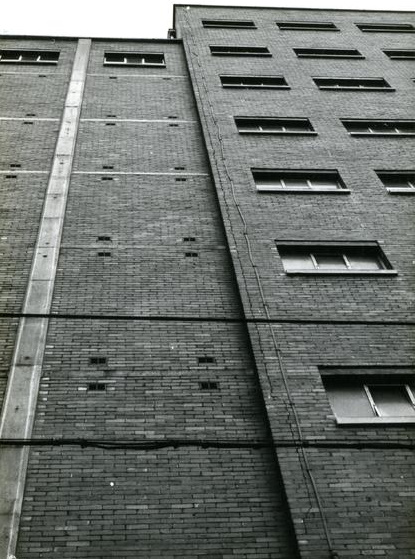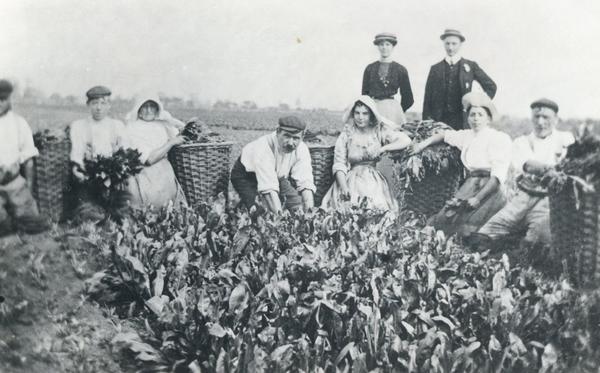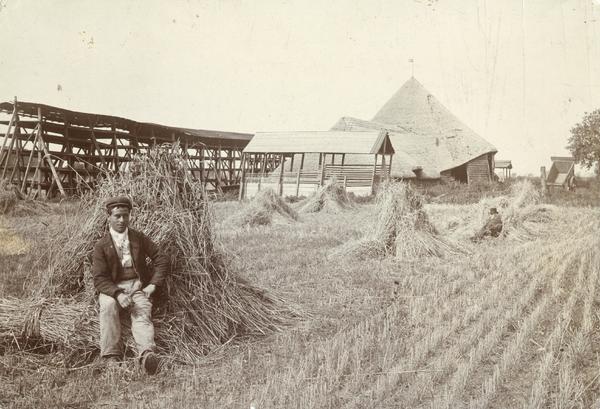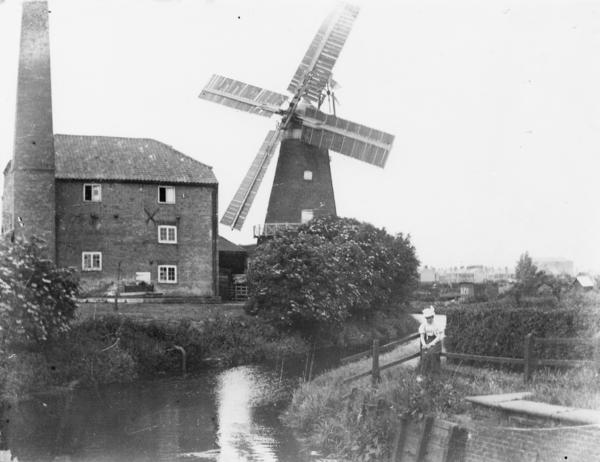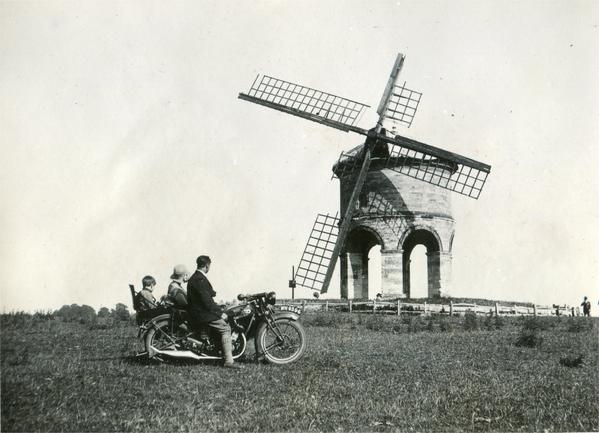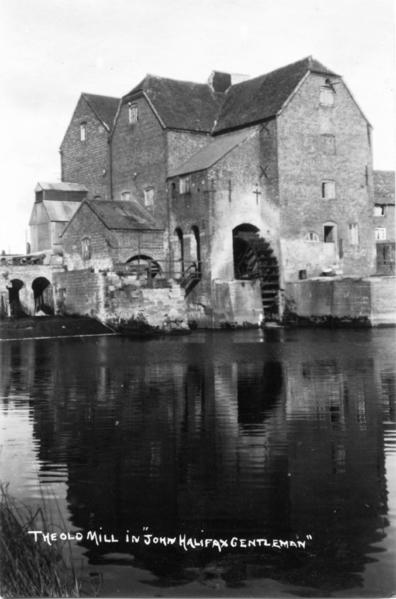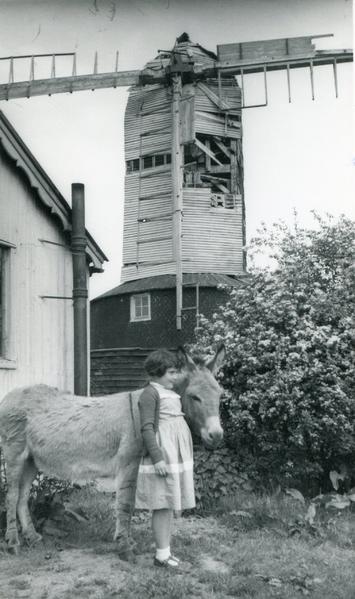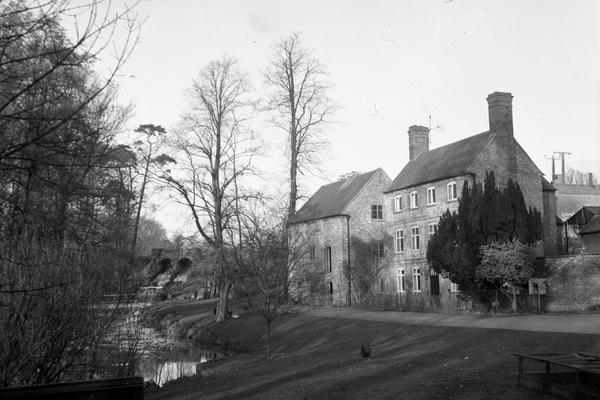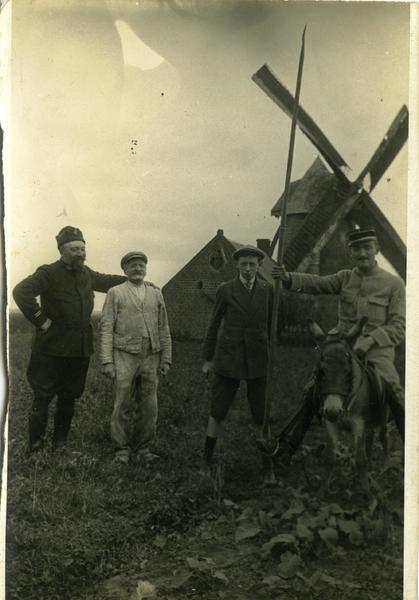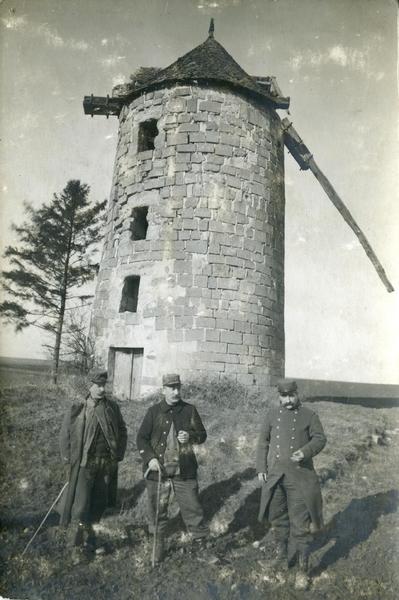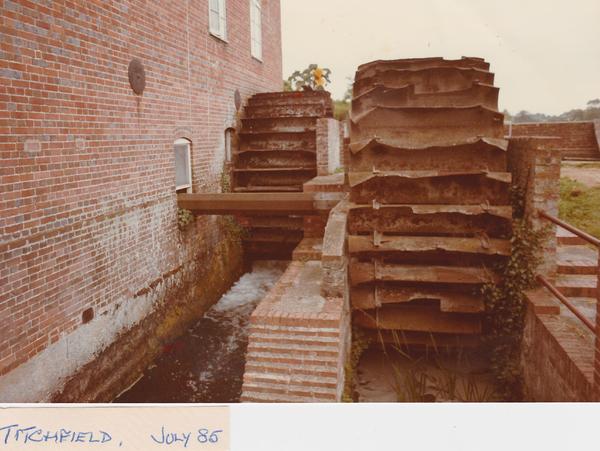| A Photograph is the “pause button” of life “What I like about photographs is that they capture a moment that’s gone forever, impossible to reproduce.” ― Karl Lagerfeld | |
| Discover the amazing collection of photographs held by the Mills Archive Trust. We have some 70,000 mill-related images in the archives, including both photographs and drawings. Many are available for you to purchase and download in high-resolution, enabling you to print perfect copies which you can frame or keep for your own records. | |
| These images capture precious moments in the lives of mills and milling families, moments that are gone forever. A mill may have disappeared, but the photograph remains as a reminder of its former majestic presence on the landscape. Millers long since passed can be seen hard at work, taking a break with colleagues or posing formally with their families. In a later newsletter we will bring you a taste of some of the mill-related drawings, diagrams and works of art in our collections that are also available to download in high resolution. To give you a flavour of the incredible range of photographs available to download, we asked some of our staff members, trustees and volunteers to choose their favourites and to explain why they chose them. For some, their choice was based on the artistic merit of the photograph, for others a personal connection to the mill or place, while for others the people in the photographs piqued their interest. | |
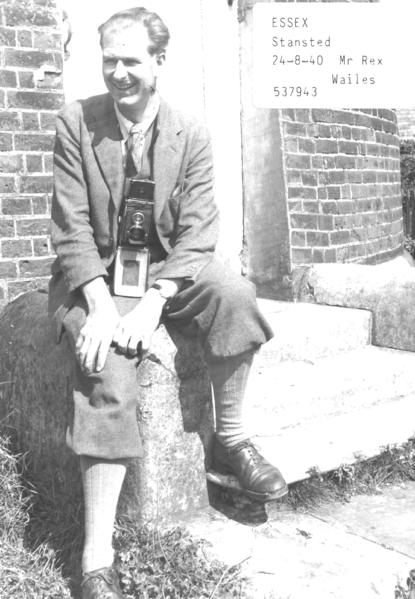
The first photograph has been chosen by one of our trustees, Charles Pinchbeck, and is an appropriate one to start off with as it features an obvious reference to photography. Charles explains the reasons for his choice:
“I’ve chosen a picture of a person rather than a mill for a number of reasons. Firstly, it reminds us that we are caring for the people and their stories as much as artefacts and documents. It is also one of the Archive’s real success stories that means a lot to me personally. Rex Wailes was the founding father of mills research and amassed a collection of international significance. As a young student I went to the National Monuments Record to look for pictures of our local mill – Heckington – and was told in no uncertain terms that was not going to happen. In fact there was no public access at all. Forty years on, the Archive has been instrumental in giving public access for the very first time – a great result. And at a personal level it has uncovered treasures far beyond what I’d hoped for.”
Our director, Liz Bartram, also chose photographs of some of the people involved in milling; these two images show workers at woad mills, both from the Rex Wailes collection. | |
| Liz also selected this photograph of a mill near where she used to live in King’s Lynn, Norfolk. She particularly liked the women’s clothes, typical of the period, the composition of the photograph and the way the river, tower mill and steam chimney were all featured. | |
| Database Executive, Nataliya, chose this photograph of Chesterton windmill in Warwickshire, showing the distinctive tower mill with one broken sail. Sitting in front of the mill on the motorbike are a Father, Mother and Son, possibly Henry Charles Cross and his family. | |
Nataliya was also drawn to this photograph of Abbey Mill in Tewkesbury taken in around 1900. She was impressed by the dramatic look of the mill and its reflection in the water.
And this photograph of a child standing with her patient donkey, and the derelict post mill in the background, struck a chord with Nataliya.

Our archivist, Nathanael, chose two photographs of West Blatchingdon Mill in Hangleton, Sussex:
Nathanael was impressed by the spiralling patterns made by the flock of birds above the sails.
West Blatchingdon Windmill, Hangleton, Sussex; photograph taken by Sara Jarman in 2016
hjhjhyjh
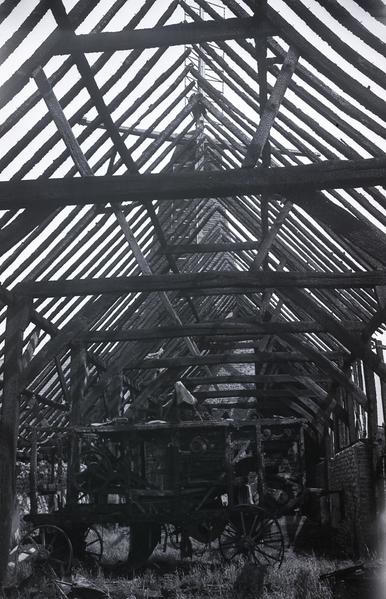
This photograph, taken through the interior of a barn at the base of the windmill, was captured by town planner and artist, Stanley Freese, in 1936. Nathanael particularly liked the zebra-like pattern of light and dark, and the way the windmill can just be glimpsed in the background.
Interior of barn at base of the Windmill, West Blatchington, Sussex
| Our Chairman, Ron Cookson, made an unusual choice. His photograph was taken in July 1928 of the demolished remains of Beacon Hill postmill, Newark, Nottinghamshire. His attention was drawn to it in the early days of the archive and he used it in 2006 to show the damage that could be caused to photographs by paper clips and writing on the back in ink. | |
| Ron remarks, “I had assumed that the man shown was looking sad because his mill had fallen over. In fact, he was the one who pulled it down.” As the catalogue entry states: “All that remains of the last wind mill in Newark, Notts. Formerly Mr Smith (aged 88) who is in this view remembered 8 mills in this vicinity. He bought this mill which adjoined his timber yard and had it pulled over by means of wire rope and engine last autumn. Notice remains of round house on right. French stones for flour on left.” | |
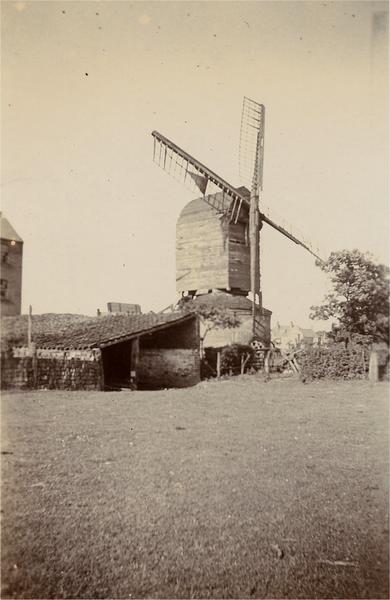
| It used to look quite splendid see: https://catalogue.millsarchive.org/beacon-hill-mill-newark-3 “So I see the image now as a reminder of why we were set up originally – to save the memories of wind and watermills, sometimes in spite of the actions of their custodians!” |
| Volunteer Guy Boocock, admits that when he’s cataloguing images, he does not really take much notice of their artistic merit…so he’s revisited the archives to select his favourites. He was struck by this atmospheric photograph of Wodehouse Mill, Wombourne: | |
| Guy said, “I particularly like the perspective, the grandeur of the millhouse and romanticism of the weir and stream.” The photograph was taken by John Bedington in 1967. | |

Guy was also drawn to this photograph, taken in 1951 by mill researcher Stephen Buckland, of Birch Green Post Mill in Essex. There is something sad, yet picturesque about the image of a mill in such a state of disrepair.
| Other favourite images of Guy’s include these incredibly poignant postcards from the French battlefields of World War I; on the left are Russian and French soldiers posing beside a miller and his son in 1915, and on the right French soldiers beside Moulin de Fontaine les Nonnes, Douy-la-Ramée, Seine-et-Marne. | |
| Trustee and Deputy Chairman, Ashok Vaidya, chose this detail from Titchfield Mill, Hampshire. The reason for his choice? “Two Poncelet waterwheels, each about 16 feet in diameter and 6 feet wide, here rather dilapidated in 1985 but since restored. I like the way the axle is taken into the mill, it looks as though someone has opened a window and a massive iron shaft poked through.” | |
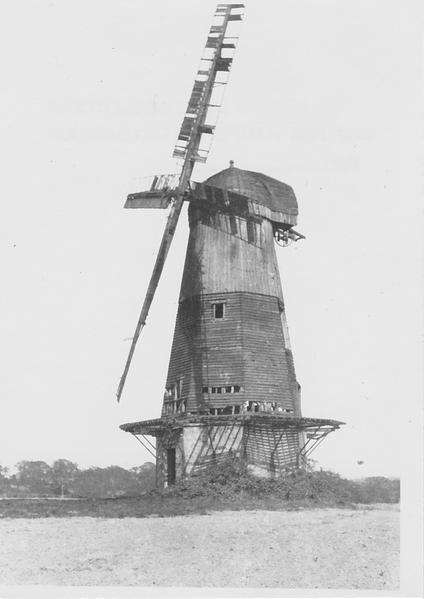
| Ashok also chose another rather sad shot of a dilapidated mill, Almer’s Smock Mill in Surrey. He says, “This photograph from 1929 captures the bathos of a fine windmill left to decay after a long and productive life, no longer wanted or loved.” |

Development Manager, Jane, found this postcard of Cley Windmill, Cley-next-the-Sea in Norfolk from around 1925. She says, “I have been on many family holidays to the north Norfolk coast and the windmill at Cley has featured in many of my own photos. It is fascinating to see how it looked almost a hundred years ago.”
dfdfdfd
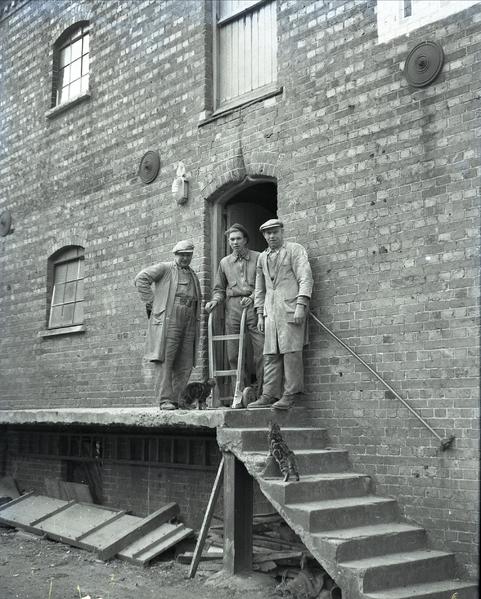
| Jane also really enjoyed this photo of five mill workers (three men and two “mousers”) outside Prewett’s Mill in Horsham, Surrey, taken by renowned mill photographer and committed mill conservationist, EM Gardner in the 1940s or ‘50s. You can read more about EM Gardner, OBE, and her interesting career here: E M Gardner (d. 1959) – The Mills Archive |


